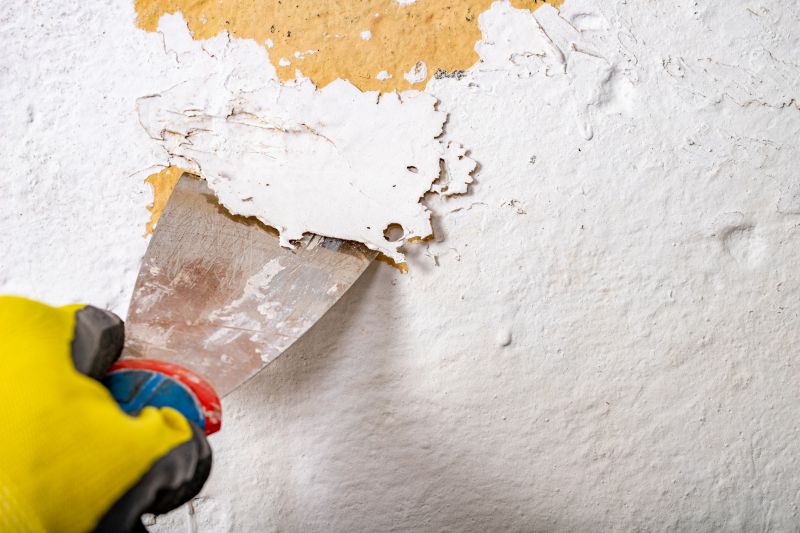Ultimate Guide to House Paint Removal Tools and Supplies
Find out which products professionals and DIY enthusiasts trust for removing paint effectively from various surfaces.
 Removing paint from house surfaces can be a challenging task that requires careful selection of the right products. Various options are available to suit different types of paint, surfaces, and removal methods. Chemical paint strippers, for example, are formulated to dissolve paint layers, making it easier to scrape away older or stubborn coatings. These products often come in gel, liquid, or paste forms, allowing for versatile application on vertical or horizontal surfaces. For those seeking a less aggressive approach, paint removers that utilize heat or mechanical methods can also be effective, especially on specific materials like wood or metal.
Removing paint from house surfaces can be a challenging task that requires careful selection of the right products. Various options are available to suit different types of paint, surfaces, and removal methods. Chemical paint strippers, for example, are formulated to dissolve paint layers, making it easier to scrape away older or stubborn coatings. These products often come in gel, liquid, or paste forms, allowing for versatile application on vertical or horizontal surfaces. For those seeking a less aggressive approach, paint removers that utilize heat or mechanical methods can also be effective, especially on specific materials like wood or metal.
Top Overall Option
Chemical Paint Stripper Gel
A versatile and effective chemical paint stripper gel designed to adhere well to vertical surfaces and provide consistent removal of multiple layers of paint. Its formulation allows for easier application and removal, making it suitable for various project sizes and surface types. Always follow safety guidelines when handling chemical products for optimal results.
Types of Products For House Paint Removals
Chemical Paint Strippers (Gel, Liquid, Paste)
Products formulated to dissolve paint layers chemically, available in various consistencies for different applications.
Heat Guns
Devices that apply high heat to soften paint for easier scraping, suitable for detailed or delicate surfaces.
Scrapers and Putty Knives
Manual tools used to scrape softened or loose paint from surfaces, essential for finishing touches.
Sanders and Abrasive Pads
Mechanical options for removing paint by sanding or abrasion, ideal for large flat surfaces.
Pressure Washers
High-pressure water devices that can strip paint from exterior surfaces quickly and efficiently.
Eco-Friendly Paint Removers
Less aggressive chemical options designed for sensitive surfaces or indoor use.
Solvent-Based Removers
Products that use solvents to break down paint layers, often used for heavy-duty removal tasks.
Foam Paint Removers
Foam-based products that cling to surfaces and soften paint for easier removal.
Laser Paint Removal Devices
Advanced equipment that uses laser technology to vaporize paint without damaging underlying surfaces.
Chemical Paint Stripping Wraps
Cloth wraps soaked in chemical solutions that conform to surfaces for targeted paint removal.
Chemical Paint Stripping Foams
Foam formulations that expand and adhere to surfaces, allowing for effective paint softening.
Chemical Paint Stripping Gels
Thick gels that stay in place on vertical surfaces, ideal for detailed or hard-to-reach areas.
Popular Choices
Widely used for their effectiveness on various surfaces and paint types.
Commonly chosen for their versatility and ability to quickly soften paint for manual removal.
Essential tools favored for their simplicity and control during paint removal.
Popular for large surface projects and finishing touches after chemical removal.
Effective for exterior surfaces, often used in combination with chemical removers.
Gaining popularity for indoor projects and delicate surfaces.
Chosen for heavy-duty applications requiring strong chemical action.
Valued for their ease of application and effective softening of paint.
Emerging as a high-tech option for precision removal without surface damage.
When choosing a paint removal product, it is important to consider the surface type, the age and type of paint, and the desired removal method. Some products are designed for delicate surfaces to prevent damage, while others are more potent for heavy-duty stripping. Proper application techniques, safety precautions, and ventilation are crucial to ensure a safe and effective process. Additionally, some products may require neutralizing or cleaning agents afterward to prepare surfaces for repainting or refinishing.
The variety of products available means that homeowners and professionals alike can find suitable solutions for different scenarios. Whether tackling interior walls, exterior siding, furniture, or decorative features, understanding the options helps in selecting the most appropriate product. Remember that patience and proper preparation often lead to better results, regardless of the specific product chosen. It is always advisable to follow manufacturer instructions carefully to achieve the best outcome while maintaining safety standards.
Key Buying Considerations
- Surface compatibility: Ensure the product is suitable for the specific material you are working on, such as wood, metal, or drywall.
- Paint type: Determine whether the paint is latex, oil-based, or other, and select a remover designed for that type.
- Project scope: Consider the size and complexity of the area to be treated to choose the most efficient product.
- Application method: Decide if you prefer chemical gels, heat application, or mechanical removal based on your comfort and project needs.
- Safety precautions: Check for necessary protective gear, ventilation requirements, and handling instructions.
- Environmental factors: Indoor or outdoor use may influence the choice of product, especially regarding fumes and cleanup.
- Surface preservation: Select products that minimize damage or surface roughness, especially for delicate finishes.
- Drying and neutralizing: Some products require neutralizing agents or specific cleaning steps post-application.
- Ease of use: Consider the complexity of application and removal processes, especially for DIY projects.
- Cost and availability: Balance your budget with the accessibility of the product for timely project completion.
- Regulatory compliance: Ensure the product adheres to safety standards and regulations in your region.
- Long-term effects: Think about the potential need for surface refinishing or preparation after paint removal.
- Environmental impact: While not a focus here, consider how the product's disposal and fumes may affect your workspace.
- Brand reputation and reviews: Research user feedback to gauge effectiveness and safety experiences.
